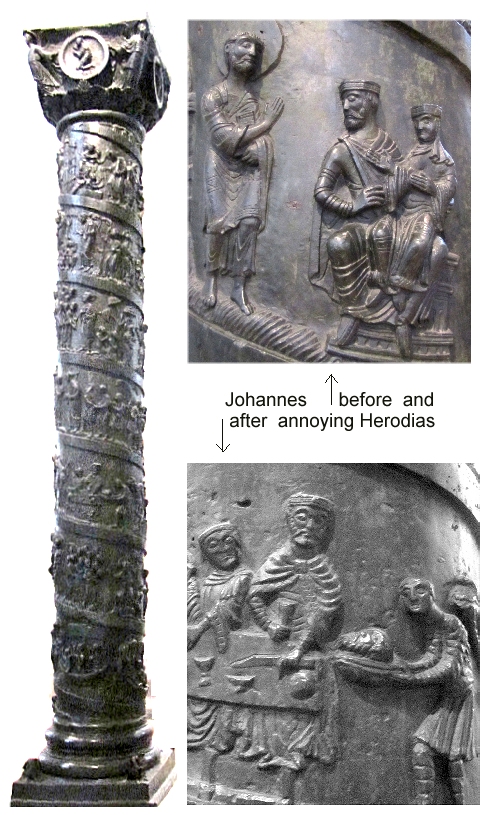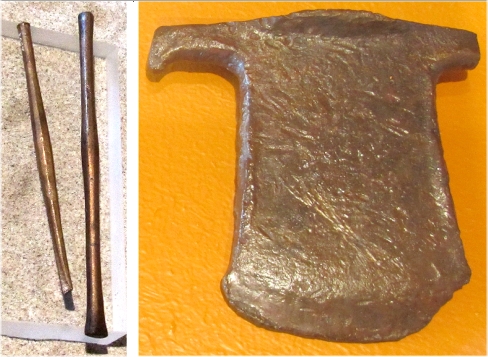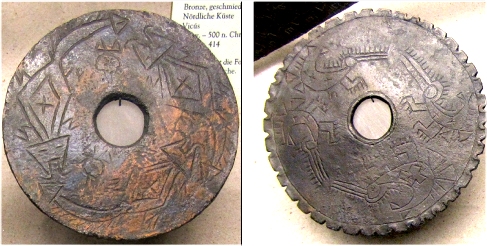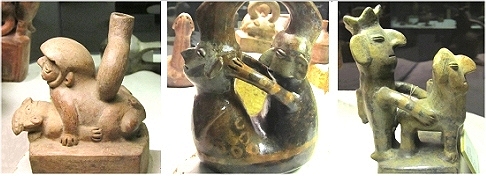| |
|
| |
General Note |
 |
The museum, located in Hildesheim, a small city in North Germany (about 100 000
inhabitants ), runs an Old-Egypt collection that is rather large and well-known. In addition, it has a remarkable collection
of South American artifacts (especially Old Peru) plus a lot of minerals, rocks and other things. Messrs. Roemer and Pelizaeus
were 19th century collectors, the bane of serious archeologists, who acquired antiquities by the car load, it seems. They
donated their loot (plus some money) to the town around 1910. |
|
 |
Hildesheim, by the way, also has remarkable churches, in particular the Church
of St. Michael, built from 1001 - 1031. From the same time is a huge (3.80 m tall) bronze column in the style of the Trajan's
column in Rome, depicting the story of Christ. |
| |
| |
| |
 |
I've never quite understood why John the baptist is
supposed to be the winner of this little contest |
|
| | |
|
 |
With respect to metals, the Roemer- und Pelizaeus-Museum doesn't offer much in
its Egyptian part. That is not so much the fault of the museum but the fault of those old Egyptians. In comparison to contemporary
Mesopotamians, they were far behind in metal technology (witness King Tut's dagger) and they didn't even leave their more sophisticated copper tools behind, like the often
postulated hollow-core copper drill. |
|
 |
Some of the Egyptian articles on exhibition I have shown
elsewhere; here are a few more objects (including irrelevant but amusing ones). |
| | |
| |
 |
Ancient Egyptian copper chisels.
The axe head might be bronze.
|
|
| | |
|
| |
 |
The tools are from 2 300 BC - 1 200 BC. Since they hardly changed, it is impossible to date
them precisely if they have not been found "in-situ" but bought on the black market. The chisels are clearly copper
but the axe head might be bronze. |
 |
The South-American exhibits are of more interest in the metal context. They demonstrate
that copper and bronze technology existed on this continent for at least 2 000 years. |
|
 |
It almost goes without saying that in the description of the artifacts "smelting"
and "melting" was sometimes confused. |
| |
| |
| |
 | | Bronze objects from South America |
|
| | |
|
 |
As we know by now, before you can go about smelting metals, you need to be able
to do high-temperature pottery. Those old South-Americans sure knew
how to do that, as the vessels below prove beyond reasonable doubt. |
| | |
|
|
|
 |
| Advanced pottery from ancient South America |
|
| | |
|
|
 |
If you are a responsible adult with a pure mind who does not look at any woman with lust (no
matter how many legs she has) or simply a scientist, you may activate this
link. |
 |
Let's not forget: Hildesheim, and the Roemer- and Pelizaeus-Museum is worth a
visit! |
| | |
|
© H. Föll (Iron, Steel and Swords script)



